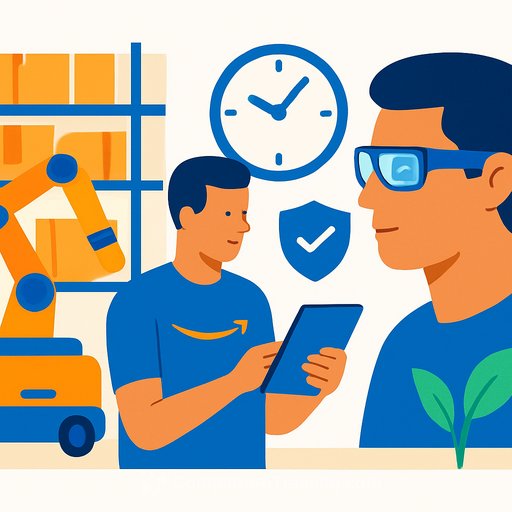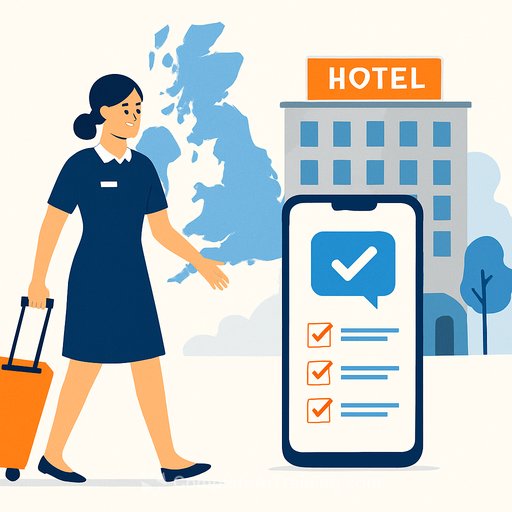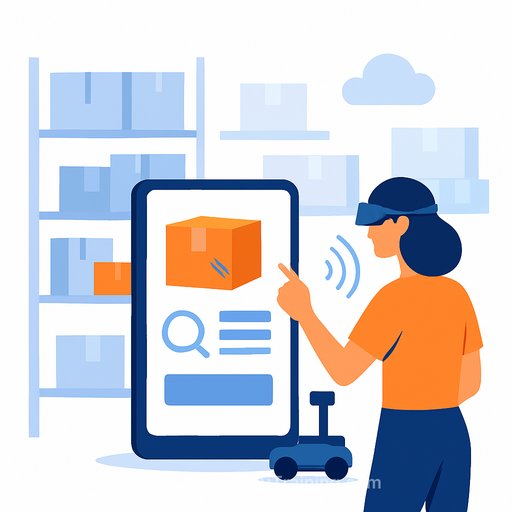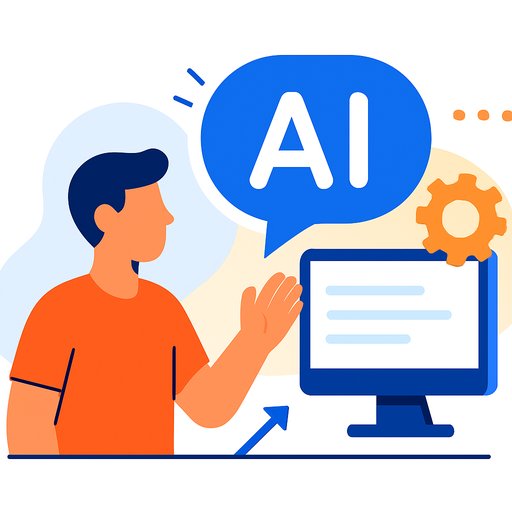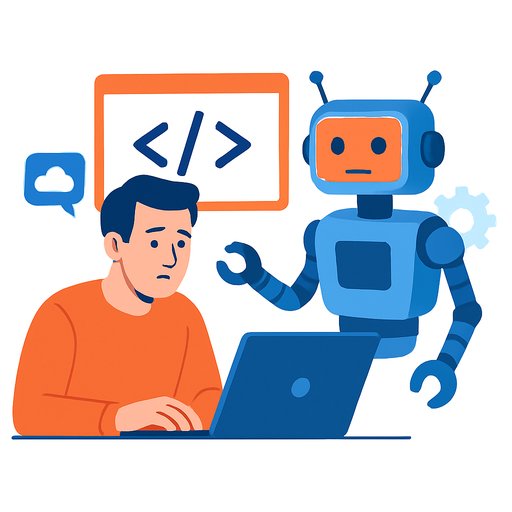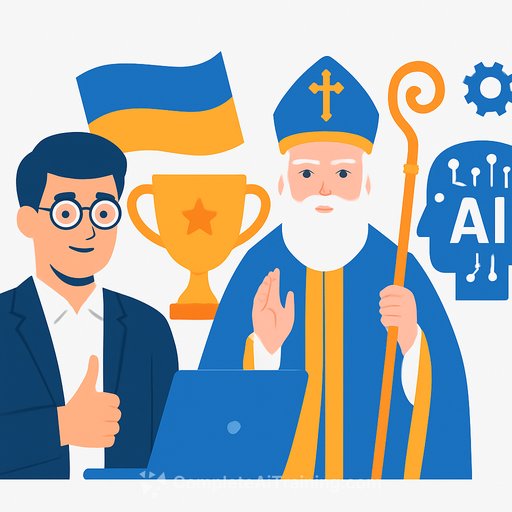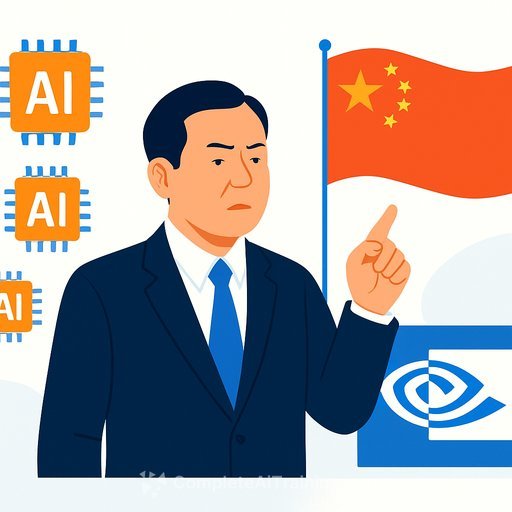Amazon's newest AI and robotics: Built for people, scaled for impact
Innovation only matters if it makes work safer, faster, and more valuable. Amazon's latest systems do exactly that-reducing repetitive tasks, supporting better decisions, and improving sustainability across the network.
Here's what matters for General, IT and Development, and Operations teams: these tools combine robotics, agentic AI, wearables, and training to remove friction from daily work while delivering measurable outcomes.
Key takeaways
- AI and robotics reduce repetitive tasks, improve safety, and boost productivity for front-line teams.
- Blue Jay, Project Eluna, smart delivery glasses, and new VR training lead the announcements.
- AI helps cut packaging waste, support disaster relief, and expand clean energy and water initiatives.
- Amazon extends free home food delivery with food bank partners through 2028.
Blue Jay: Multi-arm robotics that condenses workflows
Blue Jay coordinates multiple robotic arms to pick, stow, and consolidate at once. Think three assembly lines merged into one compact station.
Currently testing in South Carolina, it shifts employees from repetitive movement to higher-value work like quality checks and problem solving. The result: less physical strain, safer workflows, and faster throughput.
Project Eluna: Agentic AI that turns ops data into action
Project Eluna processes real-time and historical signals across facilities and surfaces insights in natural language. Instead of scanning dozens of dashboards, operators can ask direct questions and get clear guidance.
Live in a Tennessee fulfillment center for the holiday season, Eluna is optimizing sortation now and will expand into preventive safety, ergonomic rotation planning, and smarter maintenance. Teams spend more time coaching people and less time hunting for data.
Smart glasses for delivery drivers
Amazon is testing smart glasses that keep drivers hands-free and eyes forward. Directions, scans, and proof-of-delivery appear in view-no phone juggling.
Built with input from hundreds of Delivery Associates, the system uses AI and computer vision to flag potential hazards, like pets or uneven walkways, so future routes can improve.
VR training that builds safer, more consistent driving skills
Since 2022, more than 300,000 drivers have completed immersive training at Integrated Last Mile Driver Academies (iLMDA). The newest module-EVOLVE-adds a driving simulator with real-time feedback.
Over 6,000 new drivers have used EVOLVE so far, with behind-the-wheel participation above 90%. iLMDA is projected to reach 95+ delivery stations across North America by December 2026, and Amazon expects 40 sites to offer EVOLVE by the end of 2026.
Faster delivery through smarter networks
Amazon expects its fastest global delivery speeds for Prime members in 2025, driven by better inventory placement, specialized delivery, and facility design. A $4B investment is tripling the rural delivery network by 2026 to bring Same-Day and Next-Day to more communities.
AI demand prediction puts items closer to customers. Amazon Pharmacy now offers Same-Day Delivery in major cities like New York, Los Angeles, and Seattle-with kiosks enabling deliveries in minutes. From e-cargo bikes in dense areas to drones in Arizona, the fleet fits the environment.
Sustainable Same-Day sites, including a Zero Carbon-certified facility in Sacramento, show speed and sustainability can work together. Perishable groceries are included, with fresh items delivered within hours. Learn more about Zero Carbon certification.
Free home food delivery extended through 2028
What started in the pandemic is now a long-term program. Amazon and more than 40 food bank partners will continue free home delivery of groceries, giving families reliable access to meals without transportation barriers.
Since 2020, the program has delivered over 60 million meals across the U.S. and UK. The multi-year commitment helps partners plan, invest, and reach neighbors who would otherwise go without.
AI for sustainability and disaster relief
Amazon is applying AI to reduce waste and improve quality before items ship. The Packaging Decision Engine has helped avoid 4.2 million metric tons of packaging waste since 2015. "Project P.I." flags defects early to prevent unnecessary returns.
During disasters like Hurricane Helene, teams use AI with drone imagery to help first responders accelerate search and rescue. This is where AI moves from dashboards to direct impact.
Clean energy and water for AI growth
To support AI infrastructure more sustainably, Amazon is investing in next-generation nuclear energy, including small modular reactors through a partnership with X-energy-expected to enable enough clean energy to power 3.8 million U.S. homes annually by 2039. For context on SMRs, see the U.S. Department of Energy overview: What are Small Modular Reactors?
Water stewardship includes recycled water cooling systems in many data centers and more than 30 water replenishment projects globally. The Water-AI Nexus Center of Excellence is sharing best practices across the industry.
What this means for IT, Dev, and Ops teams
- Instrument for decisions, not dashboards: centralize signals across systems so an agent can answer questions in natural language (like Eluna).
- Automate repetition, upskill for judgment: use robotics and AI to remove physical toil and train teams for exception handling, QA, and safety leadership.
- Train before the road: simulation and VR close the gap between SOPs and real-world behavior. Track leading indicators, not just incident rates.
- Move inventory with intent: pair demand prediction with network design to minimize miles traveled and shorten delivery windows.
- Bake in sustainability: packaging models, quality checks pre-ship, and facility energy strategy reduce waste and operating costs.
Skill up your teams
If you're building similar agentic workflows, data products, and automation, targeted learning helps. Explore role-based AI upskilling here: AI courses by job.
Bottom line: the next wave of ops excellence pairs human judgment with AI systems that remove friction. Safer work, faster delivery, and smarter resource use can happen at the same time-if you design for it.
Your membership also unlocks:

